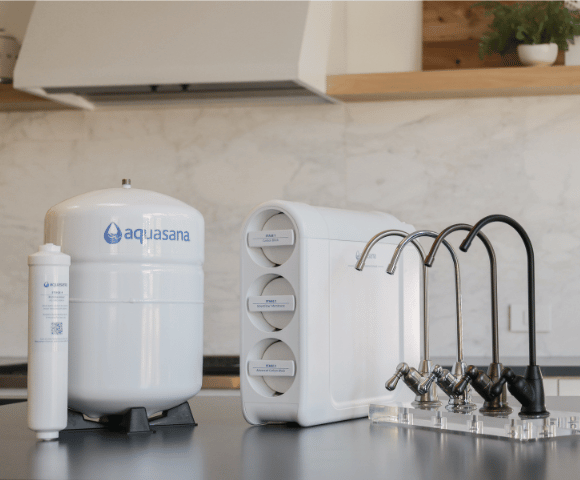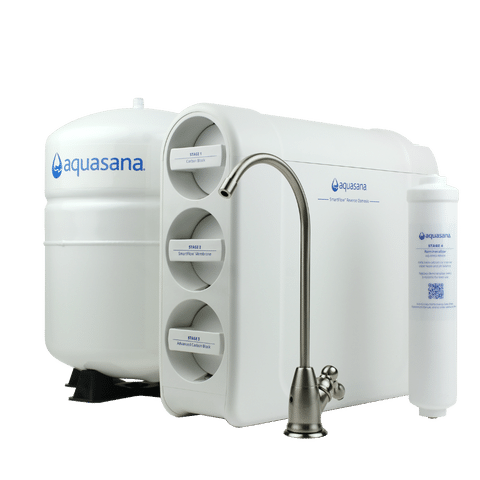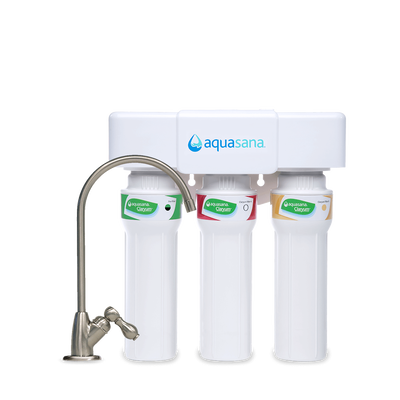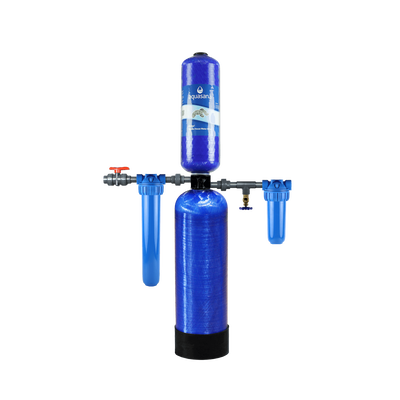Himalayan salt
Adding Himalayan salt to reverse osmosis water is another way you can remineralize it. Unprocessed Himalayan sea salt specifically has over 80 different minerals and trace elements. It’s easy to dissolve and can have a mild taste, though some people may not like having to add salt or having any salty taste (even minor) in their water.
Another concern is the amount of salt you’d need to add to get any mineral benefits. According to a research study, you’d need to add more than 30g of salt to make any meaningful contribution to nutrient intake. This amount is far in excess of health guidelines, which suggest people consume 5g or fewer of salt per day.
Alkaline pitcher
Alkaline pitchers are another option to remineralize and raise the pH level of your water. Alkaline pitchers typically use mineral balls or cartridges that are attached to your filtration system to add back minerals such as calcium, magnesium, and potassium. However, the exact minerals and amount all depend on the brand of the pitcher and filtration system.
Although alkaline pitchers can help mineralize water in general, they may be unsuitable for remineralizing reverse osmosis water. Minerals are added back, but it might not be enough to compensate for what’s lost during the RO process. The main goal of an Alkaline pitcher is to increase the pH of the water. As with any pitcher, they also require frequent replacements and manual refills, which can be inconvenient.
Benefits of adding minerals to reverse osmosis water
Adding minerals to reverse osmosis water is crucial to improve your water’s quality and lead a healthier life. Here are some of the health benefits of remineralization:
- Optimal body function: Minerals such as magnesium are responsible for over 300 enzymatic reactions in the body, while sodium is required for your muscles and nerves to function properly. It also helps with remineralization of your teeth and bones.
- Improved taste: Minerals are responsible for the taste and mouthfeel of your water, so adding them back in will certainly improve the flavor.
- Maintain healthy blood pressure: A 2019 study discovered people who drink mildly saline water exert lower blood pressure, potentially because of minerals like calcium and magnesium, which are known to help regulate blood pressure.
- Healthy digestion: Water with high mineral content has been shown to support your digestive system by increasing bowel movements and bile production, as well as an improved ability to extract nutrients from food.
- Improved hydration: Electrolytes present in mineralized water help quench thirst better and quicker than regular water, keeping you hydrated.
Experience healthier drinking water without the compromise with Aquasana
The best way to remineralize RO water is to use an RO system with a built-in remineralizer. Restoring minerals goes beyond the water you drink to your cooking water and cleaning water, including what you brew your coffee or tea with.
Our SmartFlow® Reverse Osmosis system automatically restores beneficial minerals and removes up to 99.99% of 90 contaminants such as fluoride, arsenic, chlorine, and lead for healthier, better-tasting water right from your tap. Experience the difference and try Aquasana's SmartFlow® Reverse Osmosis system.





